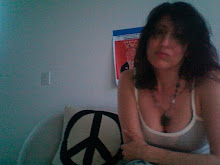Don’t Be Fooled: Bill Bratton’s Policing Policies AreDiscriminatory, Too
By Nikita Richardson — Tuesday, May 6th, 2014 ‘The Brooklyn Magazine’ / Brooklyn
(Op-Ed / Commentary)
When Ray Kelly stepped down last year, it felt like such a significant step in the right direction after years of outdated and racially-charged policing. Months earlier, a federal judge deemed “stop and frisk,” a policy that had grown rampant under Kelly’s stewardship, unconstitutional and five months later, the NYPD shuttered its Demographics Unit, a post-9/11 program that profiled Muslim residents.
That most recent change came at the behest of our new police commissioner, Bill Bratton, and is only one of several PR-friendly, evenhanded policy changes he has set in motion since taking office this year. “Knowing who is in the community, who are the good people, who are the bad people, and understanding the difference in how to interact with them — that’s the new challenge,” the newly-minted police commissioner said in a speech back in January. And yet, his new policies–the ones cracking down on subway dancers, panhandlers, graffiti artists and peddlers–are decidedly old-fashioned.
See, Bratton may be touting his new rules as weapons in the fight against “urban decay,” as he likes to call it, but the same people–the young, the infirm, the mentally-ill, the non-white, the generally disenfranchised–are being still being swept up in Bratton’s new regime. And every day feels like more of the same.
For the uninitiated, this isn’t the first time we’ve lived in Bill Bratton’s world. He was named police commissioner exactly 20 years ago under the Giuliani mayorship. At the time, Bill De Blasio was just a lowly aide in City Hall.
In 1994, Bratton and Giuliani began experimenting with a new-ish idea known as the “Broken Windows” theory. The core of the theory is that to prevent larger crimes, a police force must first prosecute smaller crimes. It’s criminology’s version of the “prevention is better than the cure” adage. Bratton got to work quickly, instituting this new approach to policing citywide. These days, we know it as the “zero-tolerance” era.
Fast forward to 2014 and Bratton is now preaching the virtues of a little-known London police commissioner named Sir Robert Peel. History may have largely forgotten his name, but policing theory hasn’t because the nine basic principles of policing theory he put forward nearly 200 years ago have stuck–hard. In fact, the ninth and most important principle goes a little something like this: “The test of police efficiency is the absence of crime and disorder, not the visible evidence of police action in dealing with it.”
Sound familiar?
Really, the only difference between the way Bratton presented his values back then and what he’s laid out now is that today we have plenty of social scientists shining light through the holes in both these theories. The main problem is that these methods confuse disorder–those five stressful minutes of “showtime” you’re subjected to on the subway, or the homeless person asking you for spare change–with actual, not-so-victimless crime.
The real crimes are the kind that have turned our city’s isolated and segregated housing projects into wells of fear and near-chaos. The real crimes are the various levels of harassment young women in this city face on a daily basis just for walking out their front door. The real crimes are being perpetrated by the heroin dealers wreaking havoc in South Brooklyn and Staten Island.
Bill Bratton has been given a truly rare second chance to change this city exactly 20 years after he first arrived and kicked off the same rigid policies sowing seeds of distrust between civilians and the NYPD today. If Mr. Bratton wants to make a real difference this time around, he needs to focus on places that actually need quality of life improvements, meaning those places where people don’t feel secure or trustful or heard, and focus his energies there instead.








